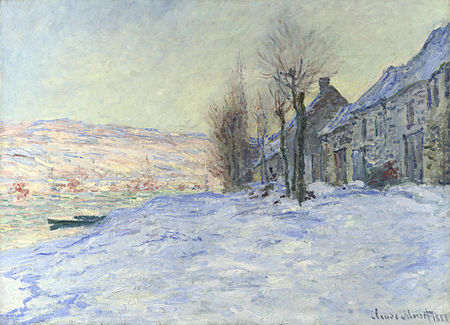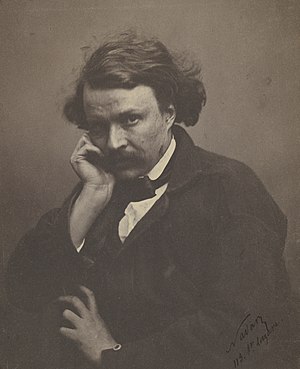Introduction
| Art Appreciation and Techniques (#ART100) | |
|---|---|
| How art speaks: Finding meaning | Overview | Introduction | How we see | First level of meaning: Formal | Second level of meaning: Subject | Third level of meaning: Context | Fourth level of meaning: Iconography | Critical perspectives | Summary |
| “ | There is only one thing in a work of art that is important: it’s that thing you can’t explain. | ” |
| —Georges Braque | ||
Even though Braque’s enigmatic quote cloaks works of art in mystery, art, by its nature, holds meaning. It explains ideas, uncovers truths, manifests what is beautiful and tells stories. It is at once a form of visual expression and non-verbal communication. Many times an artwork’s meaning, or content, is easy to see. Two examples are the freshness of an Impressionist landscape painting (below left) or the identity inherent in a portrait photograph (below right).
But sometimes the meaning in a work of art is hidden, deciphered from signposts and clues imbedded in the work by the artist. In this module we will see how formal properties, subject matter, iconography and context team up to help interpret meaning in art. Let’s approach these four terms as different levels of meaning we can examine to get a more complete understanding of what we are seeing.

